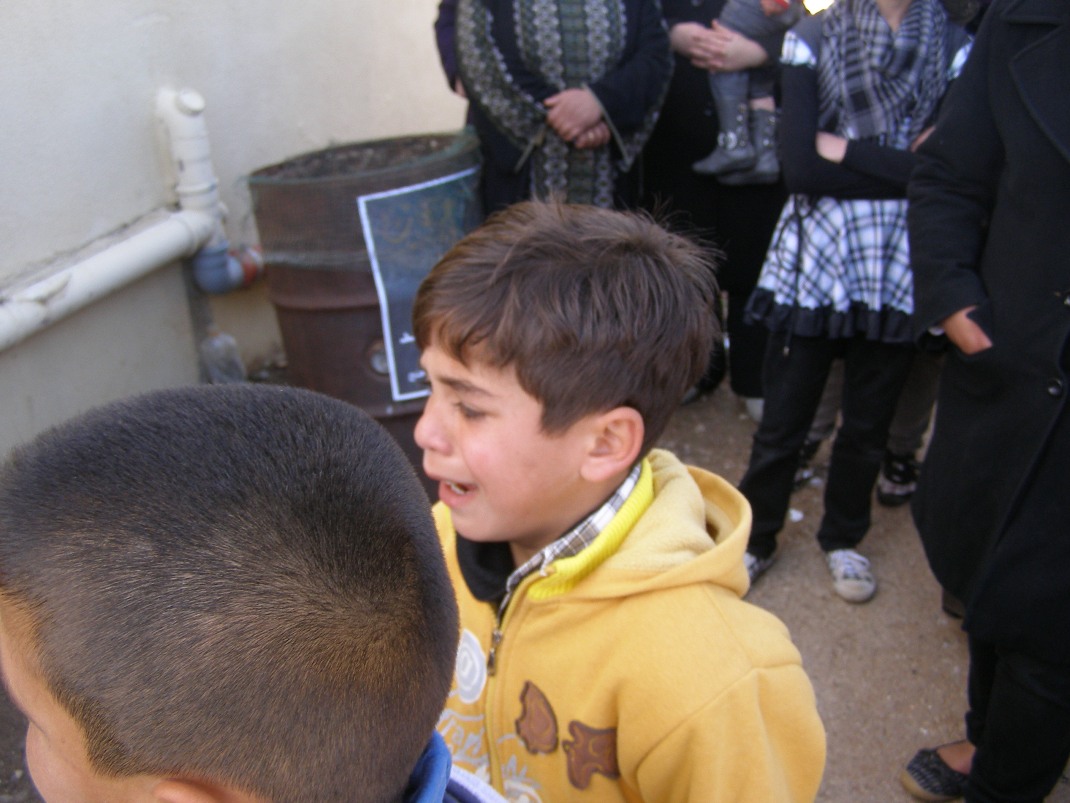Tag: Iraq Burin
-
Army fires on Iraq Burin during olive tree planting
10 April 2011 | International Solidarity Movement Bullets and tear gas were fired upon Palestinians and internationals whilst they planted olive trees on the land legally owned by the village of Iraq Burin yesterday. The popular committee asked for a group of internationals to assist them in planting olive trees on the village land which…
-
Settlers attacked farmers in Iraq Burin, south of Nablus
6 March 2011 | International Solidarity Movement Settlers attacked the villagers of Iraq Burin on Sunday, the 6th of March. The farmers had recieved permission from the D.C.O. to farm their land for two days, and were accompanied by the Israeli military to protect them from violent settlers. Soldiers left the area and about 20…
-
Funeral held for Palestinian youth killed by settlers south of Nablus
29 January 2011 | International Solidarity Movement On 27th January, 20-year old Oday Maher Hamza Qadous was killed by settlers whilst farming between the villages of Burin and Iraq Burin, just south of Nablus. According to family sources, the Palestinian youth was alone and gathering wood when settlers – most likely from the nearby, illegal…

